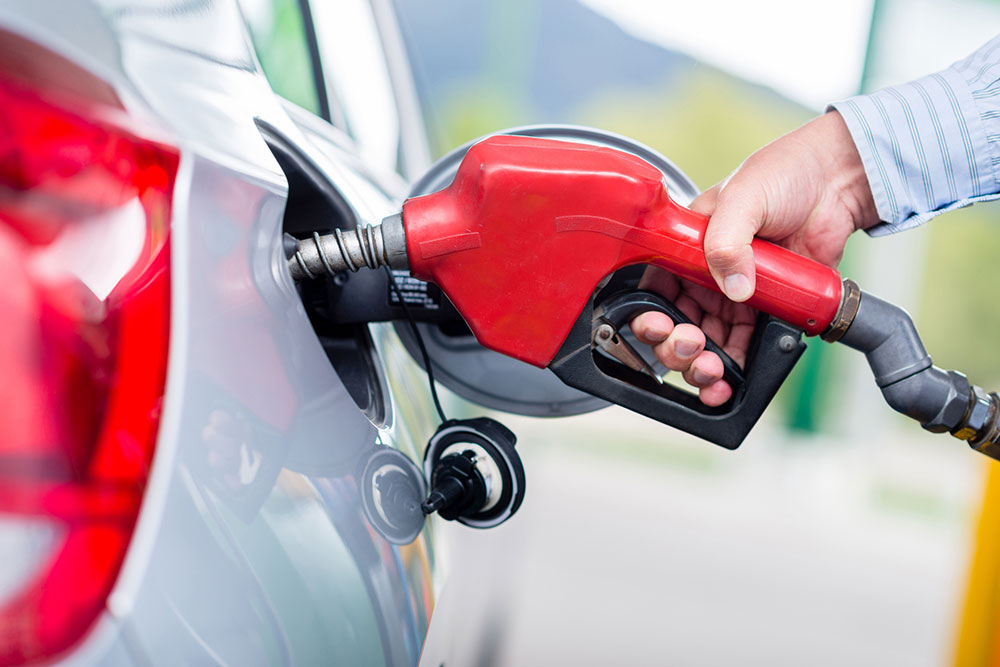Tips to save fuel on your next road trip
Get the most out of a tank of fuel on your next adventure.

Follow these tips to help you get to your destination more fuel-efficiently.
Estimate the cost of fuel for a trip
Before setting off, have an idea of the fuel costs you need to budget for. To estimate the fuel cost for a trip, you must know the trip distance, the average per litre cost of fuel and the vehicle’s fuel consumption.
The process is as follows
- Divide the trip distance by 100.
- Multiply the result of this by fuel consumption.
- Then multiply this figure by the cost of fuel/litre.
Example
- 815 km divided by 100 = 8.15.
- 8.15 multiplied by 9 (litres per 100km) = 73.35.
- 73.35 multiplied by $2.00 (per litre) = $147.
Prepare your vehicle
If your car hasn’t had a tune up and service for a while, it’s a good idea to have it done before you set off. Mechanics can replace spark plugs, fuel filters and air filters.
To get the most out of every drop of fuel, check the cold tyre pressures and condition before setting off and during the trip. Use the correct tyre pressure as recommended in the owners’ manual. Take note of any recommendations about increasing the pressure for high speed and high load operation.
Pack wisely
When packing, consider the weight of your vehicle and/or caravan. The heavier it is, the more fuel you will use.
Roof loads can add significant wind drag which will add to fuel consumption. Avoid roof racks wherever possible.
If towing, pay special attention to the weight of items in the trailer. With caravans, once everything is loaded weigh the caravan to check that it doesn’t exceed its capacity.
Preparing for your next road trip? RACQ members can also save 4 cents per litre on fuel at participating Caltex service stations# and browse local areas for the lowest fuel prices with the RACQ Fair Fuel Price App.
Use eco-driving techniques
By adopting RACQ's eco-driving techniques you can reduce both your fuel bill and your carbon dioxide emissions.
The more you brake and accelerate, the more fuel is consumed, so driving as smoothly as possible is an easy way to stretch your tank further.
For drivers of a manual car, shifting through the gears as quickly as possible will improve your fuel efficiency, while for those driving an automatic, gentle acceleration will keep the car in as high a gear as possible.
Regardless of transmission type, using cruise control on the highway can cut your fuel use.
Maintaining the correct tyre pressure, removing any excess weight, and reducing aerodynamic drag – such as roof racks and spoilers – also helps boost fuel efficiency.
Getting stuck in traffic involves a lot of stop-start driving which increases fuel consumption by an estimated 30%, so planning ahead to avoid congestion where you can is also important.
Other easy-to-follow tips include not idling if you’re parked and, as the weather gets cooler, minimising your airconditioner use can help save petrol and reduce emissions.
Click here for more eco-driving information.
#Conditions apply. Offer available at participating Caltex service stations. Visit racq.com/caltex for details.
Related topics
Things to note
The information in this article has been prepared for general information purposes only and is not intended as legal advice or specific advice to any particular person. Any advice contained in the document is general advice, not intended as legal advice or professional advice and does not take into account any person’s particular circumstances. Before acting on anything based on this advice you should consider its appropriateness to you, having regard to your objectives and needs.
Insurance Products (excluding Travel Insurance) are issued by RACQ Insurance Limited ABN 50 009 704 152 (RACQI) and arranged by its agent, RACQ Distribution Services Pty Ltd (RDS) ABN 35 116 361 650, AFSL 567130 and RDS' authorised representatives (including RACQ Operations Pty Ltd ABN 80 009 663 414, AR No. 234978 (RACQO). Conditions, limits and exclusions apply. RDS and RACQO are in the RACQ group of companies. One of the companies in the RACQ group of companies has a minority shareholding in RACQI.
RDS and RACQO have not taken your personal objectives, circumstances or needs into account when preparing advice regarding insurance products and you will need to consider whether the advice is appropriate for you. Read the Product Disclosure Statement (PDS) and any applicable Supplementary PDS before making a purchase decision on this product. You can also access our Target Market Determinations on this website. RDS receives a commission from RACQI for the policies it arranges. RACQO receives fees paid for services it provides to RDS. Further details about remuneration are available on request prior to purchasing.
Banking and loan products issued by Members Banking Group Limited ABN 83 087 651 054 AFSL/Australian credit licence 241195 trading as RACQ Bank. Terms, conditions, fees, charges and lending policies apply. This is general advice only and may not be right for you. This information does not take your personal objectives, circumstances or needs into account. Read the disclosure documents for your selected product or service, including the Financial Services Guide and the Terms and Conditions, and consider if appropriate for you before deciding.
Except for RACQ Bank, any RACQ entity referred to on this page is not an authorised deposit-taking institution for the purposes of the Banking Act 1959 (Cth). That entity’s obligations do not represent deposits or other liabilities of RACQ Bank. RACQ Bank does not guarantee or otherwise provide assurance in respect of the obligations of that entity, unless noted otherwise.
RACQ Bank subscribes to the Customer Owned Banking Code of Practice which establishes higher standards than the law requires. The Code reflects modern consumer expectations and developments in approaches to issues such as consumer vulnerability, guarantors, and supporting customers through financial hardship. Please read our Customer Owned Banking Code of Practice page for more information.
RACQ Operations Pty Ltd (ABN 80 009 663 414 AR 000234978) and Members Travel Group Pty Ltd (ABN 45 144 538 803 AR 000432492) are acting as an Authorised Representative of the issuer of the insurance, Tokio Marine & Nichido Fire Insurance Co., Ltd. (ABN 80 000 438 291 AFSL 246 548). Any advice set out above is general in nature only, and does not take into account your objectives, financial situation or needs. Before purchasing any travel products, please consider the RACQ Travel Insurance Product Disclosure Statement (PDS) and the Target Market Determinations (TMDs) that apply to these products. Whilst the PDS outlines the Terms and Conditions of these products, the TMDs outline the intended class of customers that comprise the target market for these travel products. This will allow you to consider which products best suit your objectives, financial situation and needs and consider the products appropriateness to your personal circumstances. TMDs also outline matters involving the distribution and the review of these products. The PDS, Supplementary PDS and TMDs for each travel product can be found here.
